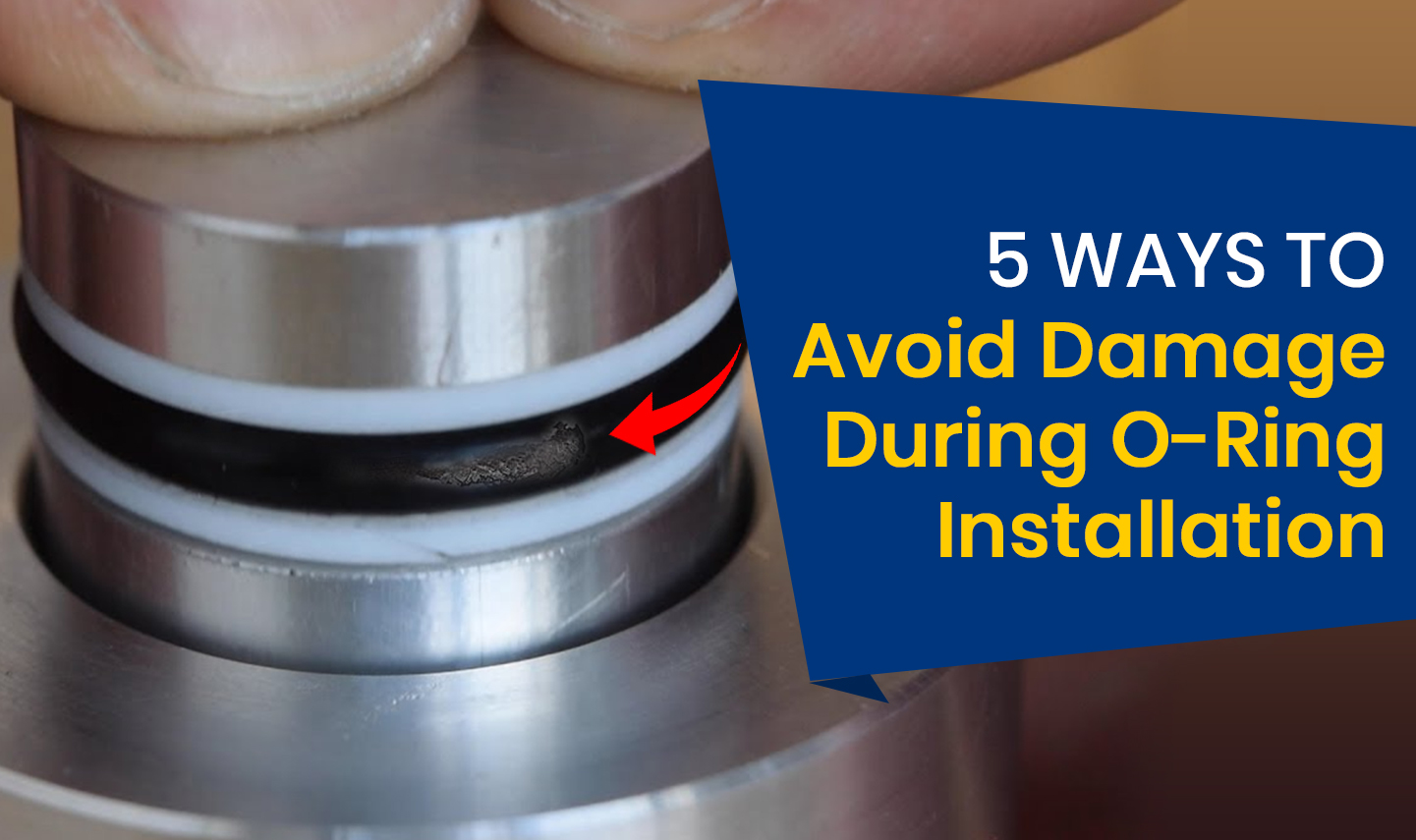5 Ways to Avoid Damage During O-Ring Installation
The most common causes of failure in an o-ring occur when it is getting installed. Twisting, tearing, and overstretching are some of the physical phenomena that frequently undermine your application’s requirements and the lifespan of your machines and equipment. If you want to maximize the lifespan of the apparatus, you will need to install o-rings with the correct methodology to prevent potential leaks.
Do you want to save money, maintenance hassles, and time? Learn the optimal o-ring installation process with these five tips:
1. Size Matters. Find the Right One.
Specific dimensions are required to seal the different components of your equipment. So, each o-ring design has to match these dimensions. Ill-fitting o-rings permit leakage and damage to both the seal and equipment components. Smaller o-rings are susceptible to tears and breakage, while larger o-rings fail to seal against gas and fluids. Engineers should ensure that there are qualification tests run on manufactured o-rings so that they are sized to satisfy the customer’s requirements.
2. Slide Your O-Rings, Don’t Roll Them.
Spiraling is a type of o-ring failure common in hydraulic piston and rod seals. The o-ring will get “hung up” at one point on its diameter, in most cases, against its cylinder wall ,causing surface cuts and twisting. To mitigate this, slide your o-ring into place instead of rolling it, and as additional means to improve the process, lubricate your o-ring sufficiently before sliding it in.
3. Avoid Overstretching
Understand the dimensions of the o-ring to ascertain its stretchability. There is a maximum stretch limit to every o-ring. During installation, if you overstretch your o-ring, you could enable tearing or breakage. It is worth noting that the most important design aspect is to ensure the seal stretches enough to fit the equipment’s components. Your seal will fit tighter if you do not overdo the stretching.
4. Notice those Sharp Edges
During installation, the seal should pass over sharp edges (or “threads”) on mating components of the o-ring gland. Why? Because these “threads” tear your o-ring. Leakage can be caused by microscopic tears that are largely invisible to the naked eye, and that is exactly why this problem must be avoided at all costs. One way to mitigate damage from these threads is safeguard them under masking tape during the installation process. Lubrication will help you slide the seal into place if there are unavoidable sharp edges on your mating components.
5. Find the Optimal Lubrication
When your o-ring is ready for transition during installation, it will require lubrication to diminish the surface friction. But most operators and plant managers forget that lubricants vary, and not all are appropriate for your sealing material and application. You will need to choose lubrication formulations based on that. O-rings can swell or dry up if they go under the action of petroleum-based lubricants. To avoid shrinking or swelling, you will need to ensure that the lubricant you select is compatible with your o-ring material.
Consult with our team at Harkesh for multiple installation ideas, including lubrication options based on o-ring material. It is better to look for an expert opinion and we can help you avoid damage to your equipment over the long term, with objective analysis. We are an established manufacturer of custom sealing solutions for companies in need of industrial solutions.








